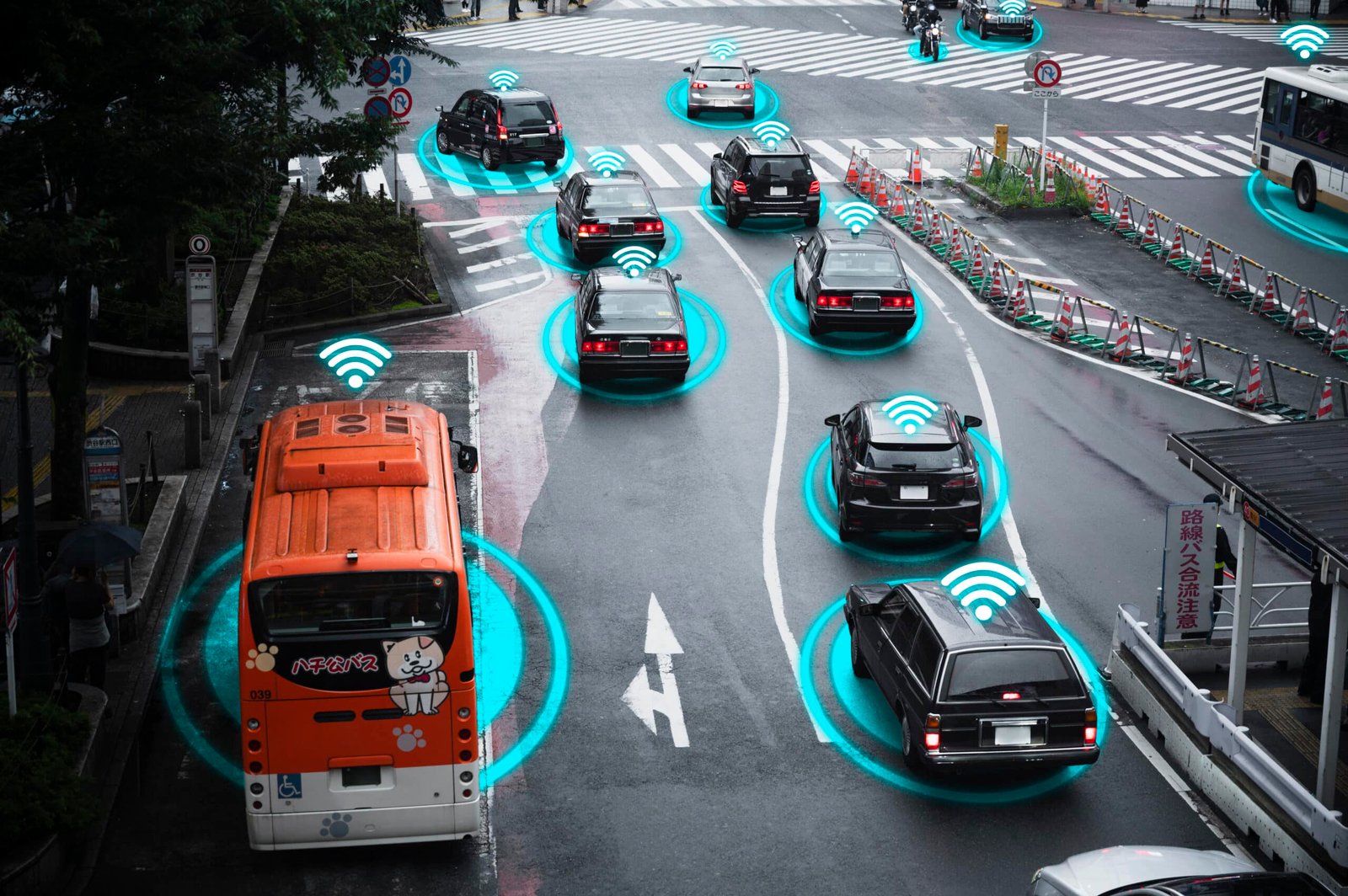Autonomous vehicles have ushered in a new transportation era that could revolutionize how we travel forever. Self-driving cars with advanced sensors and AI can navigate and make decisions without human input.
So, how do autonomous vehicles work?
Automatic vehicles collect data about their surroundings using cameras, radar, and sensors. Next, complex algorithms examine this data and test it against artificial intelligence systems, allowing the automobile to make smart judgments and drive safely. The sensors indicate its road position, adjacent pedestrians and cars, and hazards and barriers. The AI system decides whether to accelerate, brake sharply, or do something different.
Its key components are their ability to communicate with one another and their infrastructure. This means they’re constantly sharing things like their location or speed with each other so they can coordinate movement and communicate with traffic lights, road signs, etc. They do that too! It’s a way for them to respond and react quickly to any changes that may come their way.
Self-driving cars use technology and software; thus, they don’t need humans to tell them when, how, or what to do (despite popular belief).
What Are the Benefits of Having an Autonomous Vehicle?
In terms of safety, autonomous vehicles could be responsible for saving thousands upon thousands of lives each year purely because they eliminate human error, which happens way too often. They’ve been built so that they can react faster than humans and more accurately when danger is sensed nearby. Without factors like distracted driving, fatigue and impaired judgement, it’s pretty exciting to think about how this could be the answer to stopping car accidents in general.
Aside from safety, these self-driving cars have the potential to ease up on traffic, too. This is because they can optimize routes and reduce the number of deoptimized vehicles. If fewer cars are on the road, travel times will be reduced, as will overall traffic flow. And if you ask us, that sounds like a lovely reality for anyone living in an urbanised area where congestion is beyond painful.
How Wilurbanizedous Vehicles Fit Into The Transportation Industry?
Uber and Lyft are a couple of companies that have already begun testing their autonomous ride-hailing services. What this means is that customers can request a self-driving car to come pick them up whenever they need one. It has been predicted that this advancement alone could completely change the taxi industry for good (and make things way more convenient).
And with delivery services? These self-driving cars might create another game-changer in transportation by making everything faster and more efficient. For instance, imagine if all trucks were fitted with this technology…Consumers would no longer have to wait long periods for their deliveries.
Autonomous Vehicles And The Environment
Of course, every invention we make has its downfalls on Mother Earth, but in terms of carbon emissions, these self-driving cars have managed to do something right. Their ability to optimize routes and eliminate traffic flow has already optimized the problem! However, can we add electric or hybrid engines to them as well? Well, now you’re looking at the even more significant impact of reducing greenhouse gas emissions!
Autonomous vehicles are like a Swiss army knife of cars. Once fully developed, they’ll be able to help out in so many different areas. Self-driving vehicles have been designed with safety as the number one priority. With this in mind, it is projected that by automating these vehicles, we could reduce about 90% of accidents from human road errors.
Potential Benefits of Autonomous Vehicles for Society
One area where autonomous vehicles could really shine is efficiency. By programming their speed and acceleration to maximize energy use, these cars would require much less time to do their day-to-day tasks. This would be huge for the environment, as transportation is currently America’s largest source of greenhouse gas emissions.
But wait, there’s more! — You’ve probably already thought of at least a few people who can’t drive off the top of your head: Grandma; that old guy next door; Cousin Timmy before he was even born (he’s only four months old, but I’m certain he’d be terrible). What I’m trying to say here is that not everyone has access to a vehicle or their driving license. And by giving them an automated ride, we increase accessibility and improve lives all around.
Challenges and Concerns Surrounding Autonomous Vehicles
With new ways to get from point A to point B come new forms of travel themselves. “Why buy a car when you can just summon an AI driver with your cellphone?” It seems like it might become a saying pretty soon. It’s no secret that personal car ownership wreaks havoc on our planet and cities’ infrastructures alike. However, with self-driving cars becoming more common, people may start relying on ride services rather than purchasing their own, which will free up way more space in urban parking lots too.
This all sounds amazing, but there are still plenty of obstacles standing between us and fully automated roads. See this: Safe driving computer programs won’t avoid every crash situation, but testing and trial-and-error will get us there. Then comes the issue of data safety and cybersecurity, which I’m sure you can already imagine.
At least 90% of accidents are caused by human error on the road. That’s a staggering number when you really think about it. Now, in no way am I saying we should replace every driver on earth with an AI (that’d be kind of of co,ol, though), but we should certainly consider automating the one behind the wheel.
The Future of Autonomous Vehicles
Let’s focus on others instead of what autonomous vehicles could accomplish for us drivers: Many people don’t have automobiles or licenses; therefore, automating cars would make them more mobile.
That said, society may soon determine that car ownership isn’t worth it. Why own a car if automated taxis were constantly available? It would cut traffic pollution and free up space in crowded parking lots.
Government Regulations and Policies for Autonomous Vehicles
As mentioned earlier, these vehicles aren’t without challenges. You can add them up yourself: safety, data protection, cybersecurity, legal issues, and so much more. As technology advances, so does everything else, and since governments throughout the world are working on automated car regulations and standards, they’ll likely come soon.
Autonomous vehicles are complex beast. They require government bodies, industry leaders, and researchers to work together to create a set of rules that tackle the unique challenges presented by self-driving cars. If they do manage to collaborate, however, we’ll have an environment that promotes innovation while keeping the public safe.
What These Vehicles Could Mean for Our Lives
When all’s said and done, the prospect of autonomous vehicles is pretty exciting. The development of these cars could lead to improved safety standards on the road, reduced traffic congestion, and increased mobility for those who need it. And that’s just at the individual level—we could also see positive changes across society. From saving lives and cutting down carbon emissions to increasing accessibility and completely transforming transportation as we know it, self-driving cars are out here doing amazing things already.
Of course, there are some severe roadblocks standing in its way (no pun intended). Before we can move forward with this technology, we need to address concerns around safety standards, data privacy,, and legal responsibility. That way, we can ensure that these vehicles are used ethically and responsibly throughout their journey.
We now know that autonomous vehicles will play a big part in our future transportation systems. Naturally, policymakers, researchers, and industry executives must collaborate to succeed. No one knows what self-driving cars may accomplish in our lifetime with the right legislation and public approval, but the future looks bright!

